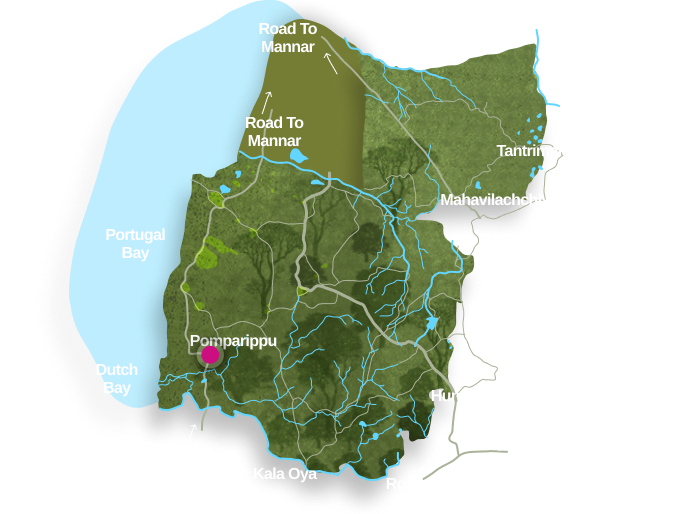A place where ancient lakes mirror the sky and wild predators stalk through silence, Wilpattu National Park is a land of legend and stillness. As Sri Lanka’s oldest and largest protected reserve, Wilpattu offers something rare: the chance to lose yourself in solitude among leopards, sloth bears and elephants. Its mysterious villus, rain-fed natural lakes, shimmer like jewels in the scrub jungle, offering glimpses of untamed drama along their quiet edges. This is the Sri Lankan wilderness in its most primal form, untouched and profoundly peaceful.






A Living Canvas of Water and Wildness
Wilpattu, meaning “”land of lakes,”” spans a rich wilderness of over 130,000 hectares along Sri Lanka’s northwest coast. Its defining features are the villus, natural depressions filled by rain, fringed with grassy clearings and surrounded by forest, creating dynamic pockets of biodiversity that draw wildlife year-round.
Leopards and sloth bears are the park’s elusive stars, particularly active between February and October. But Wilpattu holds more than just its predators. It is a sanctuary for elephants, spotted deer, barking deer, jackals, wild boar and mugger crocodiles. With a gentler visitor footprint than other parks, it offers a quiet, immersive safari experience.
What to Expect in Wilpattu National Park
Game drives in Wilpattu wind through sandy forest tracks that open into still-watered villus where herds graze and predators prowl. Leopards often lounge by water’s edge, while sloth bears emerge from the undergrowth in search of fruit.
Birdlife is abundant, with endemic species like the Ceylon Junglefowl and Brown-capped Babbler making frequent appearances. Butterfly enthusiasts may spot the vibrant Blue Mormon or the delicate Crimson Rose fluttering through clearings. Whether you are watching crocodiles sunbathe beside a forest lake or listening to the haunting calls echoing through the brush, Wilpattu rewards patience with awe.